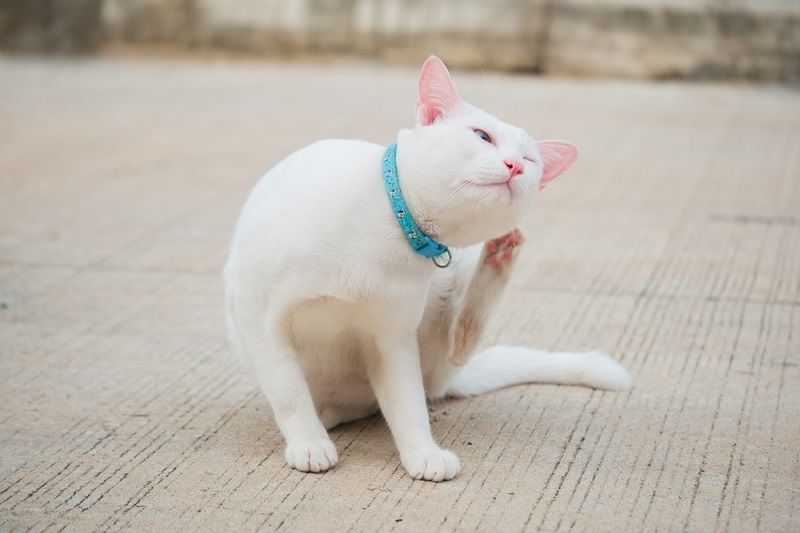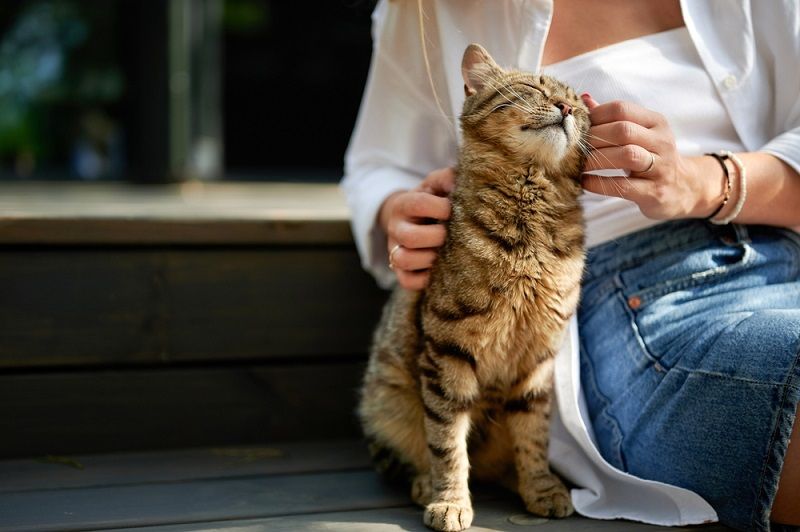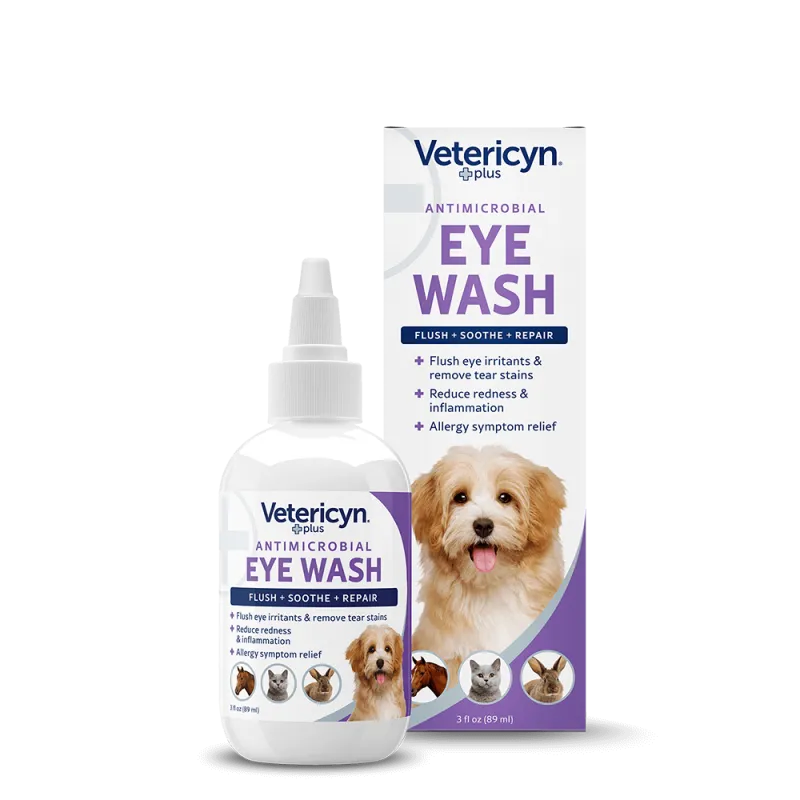Powered by Bestia Europe B.V.
Why Is My Cat Scratching Its Ears? Common Causes and What to Do
Every cat parent knows cats are meticulous groomers. Whether licking their paws, washing their faces, or cleaning hard-to-reach spots like their ears, our feline friends take self-care seriously.
But what happens when that occasional ear scratch turns into constant clawing and habitual head shaking? Suddenly, a typical cat quirk may point to a deeper issue. Cats can experience variousear problems, which need attention to prevent further complications.
If you’ve noticed yourcat scratching its ears more often than usual, use this guide to learn the common causes of ear scratching in cats, how to assess their ears at home, and when to seek professional help.
Ear Scratching in Cats: What’s Normal vs. What’s Concerning
Cats can spend up to 50% of their waking hours grooming.1 When they’re not busy giving themselves a fancy fur bath or perfecting their paw wash, they’re sneaking in a few ear scratches to keep themselves clean and comfortable.
While these grooming habits are part of a cat’s regular self-care routine, certain behaviors may indicate something less-than-normal.
Understanding Natural Behaviors
Grooming is a natural behavior rooted in feline biology.1 It helps regulate body temperature, reduces stress, and even strengthens a cat’s scent profile, allowing them to mark their territory.2
Those ear scratches? They’re not just about removing stray flakes of dandruff. They’re also a way for cats to stimulate nerve endings, which can feel as satisfying as a good stretch. When it comes to your cat’s ears, natural grooming behaviors can look like3:
- A few gentle ear scratches after a meal
- Brief, occasional ear rubbing during daily cleaning
- Light head shaking to dislodge dust or debris
But there’s a point when ear scratching becomes excessive. Signs of abnormal grooming can include3:
- Persistent, intense ear scratching that doesn’t let up
- Repeated head shaking accompanied by whining or vocalizing
- Rubbing the ears against furniture or the floor aggressively
Understanding what’s behind that relentless itch can help you take the right steps to soothe your cat’s ears and restore their comfort.
Common Causes of Ear Scratching in Cats
From pesky parasites to environmental allergens, a variety of factors could be causing your cat’s discomfort. Common culprits of ear scratching in cats include4:
- Cat allergies – Cats can develop allergies to food, pollen, dust, or even certain cleaning products. These allergens may cause itchy, inflamed skin, including on the ears.
- Ear mites – These parasites thrive in the warm, moist environment of a cat’s ear canal. Being aware ofear mite symptoms in cats is important, as they’re highly contagious and can cause intense itchiness, leading to increased scratching and head shaking.
- Infections – Bacterial or yeast infections often develop when moisture or debris accumulates in the ears. Look for redness, swelling, and a foul odor as telltale signs.
- Foreign objects or debris – Grass seeds, small insects, or dirt can become lodged in a cat’s ear, causing irritation and persistent pawing.
- Behavioral issues – Stress or anxiety can also manifest as repetitive scratching. Cats may resort to over-grooming to cope with boredom or an unstimulating environment.
A little detective work can go a long way in pinpointing the cause of your cat’s ear flicking and fussing.
How to Assess Your Cat’s Ears: What to Look For
Before deciding on a course of action, you must assess the condition of your cat’s ears. By carefully examining the ears, you can better determine whether at-home care or a visit to the vet is best.
Visible Signs of Infection or Irritation
Cats are masters at hiding discomfort, but their ears can reveal more than you might think: A healthy ear should look clean and pale pink, with minimal wax and no visible inflammation.5
Signs of inflammation or infection are typically easy to identify. Start by gently inspecting the outer ear and ear canal for6:
- Redness or swelling
- Scabs or open sores
- Excessive earwax buildup
- Scratches or bleeding
If you notice any of these signs, proceed with caution. Certain symptoms could indicate a bacterial or yeast infection that requires medical attention.
Odor and Discharge: What They Indicate
Any unusual scents or discharge coming from your cat’s ear could be a clue that something isn’t quite right. While a healthy ear is generally odorless and free of debris, certain symptoms can point to problems, such as5:
- Foul odor – A strong, unpleasant smell emanating from the ears is often associated with yeast or bacterial infections.
- Dark, coffee ground-like debris – If you spot tiny, dark particles resembling coffee grounds in the ear, it could indicate ear mites. These microscopic parasites thrive in the ear canal, causing intense itching and irritation.
- Discharge – Clear, watery discharge can sometimes indicate an allergic reaction or minor irritation, while thick, colored discharge may suggest a bacterial infection or pus buildup.
Odors and discharge can provide valuable clues about what’s happening beneath the surface—but they’re only part of the picture.Cat ear infections and infestations can be serious if untreated. In some cases, behavioral changes can reveal underlying issues, too.
Behavioral Changes and Discomfort
Behavioral changes can offer some of the most telling signs that your cat’s ears are causing trouble. Pay close attention to how they’re acting, especially if their usual grooming habits suddenly shift to more persistent or intense scratching. While you spend quality time with your cat, watch for7:
- Frequent head shaking or tilting
- Excessive scratching at the ears or rubbing against surfaces
- Increased sensitivity when you touch their ears
- Reluctance to eat or play
When a cat’s behavior suddenly shifts from content to restless, it may be more than a mood swing. Any combination of these signs warrants further investigation.

What to Do if Your Cat Is Scratching Its Ears
So, your cat’s scratching ears have gone from casual to constant—now what? Taking swift action can keep those ears healthy and itch-free. Whether you’re dealing with mild irritation or more serious symptoms, several practical steps can help soothe the ear-scratch cycle before it spirals into something worse.
At-Home Care: Cleaning and Monitoring
If your cat’s ear scratching seems mild and isn’t paired with obvious signs of infection, you may be able to provide some comfort right at home. Three early intervention steps can help stop minor irritations from turning into major issues:
- Clean the ears gently – Use gentle pet ear drops to clear away dirt, wax, and debris. Apply the solution to a cotton ball and carefully wipe the outer ear area. Avoid inserting anything deep into the ear canal, as this can cause damage or push debris further inside.
- Apply soothing products – To help calm irritated skin and support healing, consider using a gentle topical solution formulated for cats. Such products can treat the affected area and provide relief. Products like Vetericyn Plus® Antimicrobial Ear Rinse are designed to soothe and cleanse without harsh chemicals, making them a safe and effective option for regular use.
- Monitor for changes – Monitor your cat’s behavior in the days following your initial treatment. If the scratching starts to taper off, that’s a good sign you’ve addressed the irritation.
At-home care can work wonders for minor discomfort, but if scratching intensifies or new symptoms appear, it’s time to consult your vet.
Visit the Vet: Red Flags and Urgent Symptoms
Certain symptoms require professional intervention, such as:
- Persistent scratching that doesn’t improve with at-home care
- Bleeding or significant swelling in the ear
- Signs of severe pain, such as yowling or flinching when touched
- Head tilting, loss of balance, or disorientation
- Discharge with a strong, foul odor
Treatment Options
After your visit, your vet will recommend specific treatments based on the underlying cause of your cat’s ear scratching. From targeted treatments to soothing solutions, you can expect your vet to suggest8:
- Medications – If the issue stems from a bacterial or yeast infection, your vet might prescribe antibiotics or antifungal medications. These can come in the form of oral pills, ear drops, or ointments.
- Topicals – For localized irritation or mild infections, topical treatments like medicated ear cleansers or anti-inflammatory gels can provide targeted relief. These products help soothe irritated skin, reduce swelling, and keep the ear canal clean and debris-free.
Whether it’s a prescription medication or a gentle topical solution, follow your vet’s instructions carefully to ensure your cat’s ears heal properly and stay healthy.

3 Tips for Healthy Ears
Keeping your cat’s ears in tip-top shape is easier than you might think. These at-home habits can support your cat’s ear health:
- Regular cleaning routine – Clean your cat’s ears every two weeks or as recommended by your vet. Use a gentle ear rinse to remove debris and prevent infections.9
- Managing allergies and irritants – Identify potential allergens, such as dust, pollen, or certain foods, and minimize exposure. Regular grooming can also help reduce allergens on your cat’s skin.10
- Behavioral enrichment to reduce stress – Use engaging toys, scratching posts, and interactive play to cure boredom and prevent stress-related scratching.11
Keep Your Cat’s Ears Happy and Healthy with Vetericyn
Your cat’s ears may be small, but they play a big role in their comfort and well-being. Whether tackling mild irritation or simply staying ahead of buildup, consistent care can prevent future flare-ups.
Vetericyn offers pet parents a quality ear care solution they can trust.
Our cat care products include an ear rinse specially formulated to gently flush out dirt and debris, soothe irritation, and support everyday ear health without harsh ingredients or added stress for you or your cat. It’s the kind of care that fits right into your regular wellness routine, helping your cat feel its best from ears to tail.
The next time you notice your cat scratching their ears a little more than usual, reach for a product that puts their comfort first. Browse more pet wellness solutions today.
Sources:
- Science Direct.The organization and control of grooming in cats.https://www.sciencedirect.com/science/article/abs/pii/S0168159100000940
- Texas Veterinary Medical Foundation.Grooming Behavior of Cats.https://www.tvmf.org/articles/grooming-behavior-of-cats/
- Bond Vet.Cat Overgrooming: What’s Normal and What Isn’t?https://bondvet.com/b/cat-overgrooming
- Total Vet.Cat Scratching Ears: Causes, Symptoms, and Treatments.https://total.vet/cat-scratching-ears/
- Wag!Ear Discharge in Cats.https://wagwalking.com/cat/condition/ear-discharge
- Veterinary Specialty Center of Tucson.Signs That Your Cat May Have an Ear Infection.https://www.vscot.com/site/blog/2021/04/15/ear-infection-cats
- Beyond Pets Animal Hospital & Urgent Care.What is an Ear Infection in Cats?https://beyondpets.com/pet-health-plus/ear-infection-in-cats/
- PDSA.Ear infections in cats.https://www.pdsa.org.uk/pet-help-and-advice/pet-health-hub/conditions/ear-infections-in-cats
- Hill’s.How to Clean Cat Ears: A Step-by-Step Guide.https://www.hillspet.com/cat-care/routine-care/how-to-clean-cats-ears?
- The Pet Retreat Grooming Salon.How To Reduce Cat Allergies Through Grooming. https://thepetretreat.co.uk/reducing-cat-allergies-grooming/
- Helping Hands Humane Society.Indoor Cat Enrichment.https://www.hhhstopeka.org/education/indoor-cat-enrichment/
Refine by

Vetericyn Plus All Animal Antimicrobial Eye Wash 90 mL
Vetericyn Plus All Animal Antimicrobial Eye Wash 90 mL
Rinse and cleanse the eyes. Relief from allergy symptoms. Cleansing of tear stains. Effective in eye disorders.
€13,18
Veterinarian Formula

Otic Care
Otic Care
Discover Vetericyn Plus VF Ophthalmic Wash: the most powerful solution for animal eye care and irritations.
€16,49
Display prices in:EUR
